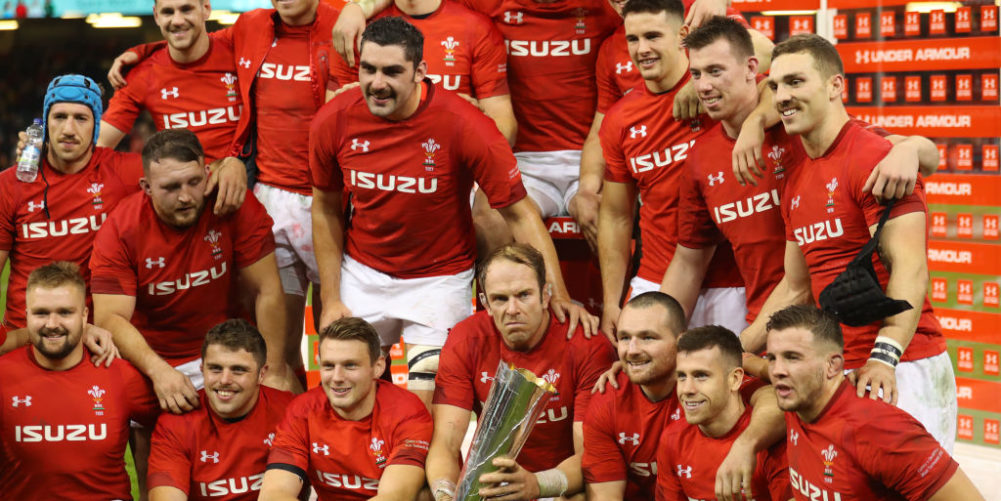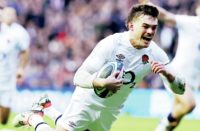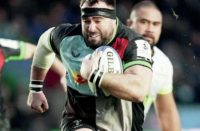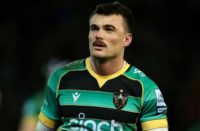THE World Rankings suggest Wales are a growing force, rising to third place after their successful Autumn campaign. The Welsh beat Australia for the first time in years, and finished the series on a high note with victory over South Africa – and it means expectations of success with the Six Nations only a month away should be high.
Even before Warren Gatland's time as coach – and certainly during – there has been a long debate about who should be the starting fly-half, and another more recent one about who can replace Rhys Webb at scrum-half following his move to Toulon.
Your 9-10 combination is so crucial, which is why it is a priority for any coach. If you are strong enough in those pivotal positions it's even possible to offset having a vulnerable front five through strong tactical kicking and fast-moving smart counter-attack.
However, the tactical demands on your half-back pairing is massive. Where your 9 and 10 will get some leeway if they make mistakes when they are behind a dominant pack, if your forwards are in reverse they have to make the right decisions every time.
Scarlets scrum-half Gareth Davies is the man in possession, and he is one of the best, combining power and speed. However, the Welsh 9 is behind Conor Murray (Ireland), Faf de Klerk (South Africa), and Aaron Smith (New Zealand) when it comes to the world pecking order, and there is a strong rumour that Gatland will find a way to bring Webb back into contention before the World Cup.
In my view it would be crazy not to get a player of Webb's match-winning ways back in the Wales squad. I hope it happens, because it makes no sense for one of the world's most talented scrum-halves not to get the chance to play in the World Cup.
Gatland also has a bit of sifting to do at fly-half, with Gareth Anscombe, Dan Biggar and Rhys Patchell vying for top billing. At the moment Anscombe is in favour, and with running scrum-halves like Davies and Webb, and a running 10 like him, you can pose big problems for defences.
Anscombe is still finding his international wings at fly-half because, although he has 21 caps almost half of those have been as a sub. However, after giving him the starting jersey against the Springboks, Gatland clearly sees Anscombe as a 10 who can move defences around.
Biggar could still have a say, especially as he is known for knocking over those crucial kicks when Leigh Halfpenny is not in the side. The goal-kicking role is hugely important, which is why it is so hard to keep a kicker of Halfpenny's calibre out of the starting line-up – and it is also why Biggar is only one injury to the Scarlets full-back away from being called on to guarantee Wales winning the tight games.
Biggar has been there and done it, whereas Anscombe's goal-kicking at the top level is not yet proven to the same extent. However, although who plays 10 is not fixed, I would imagine Anscombe will start the Six Nations.
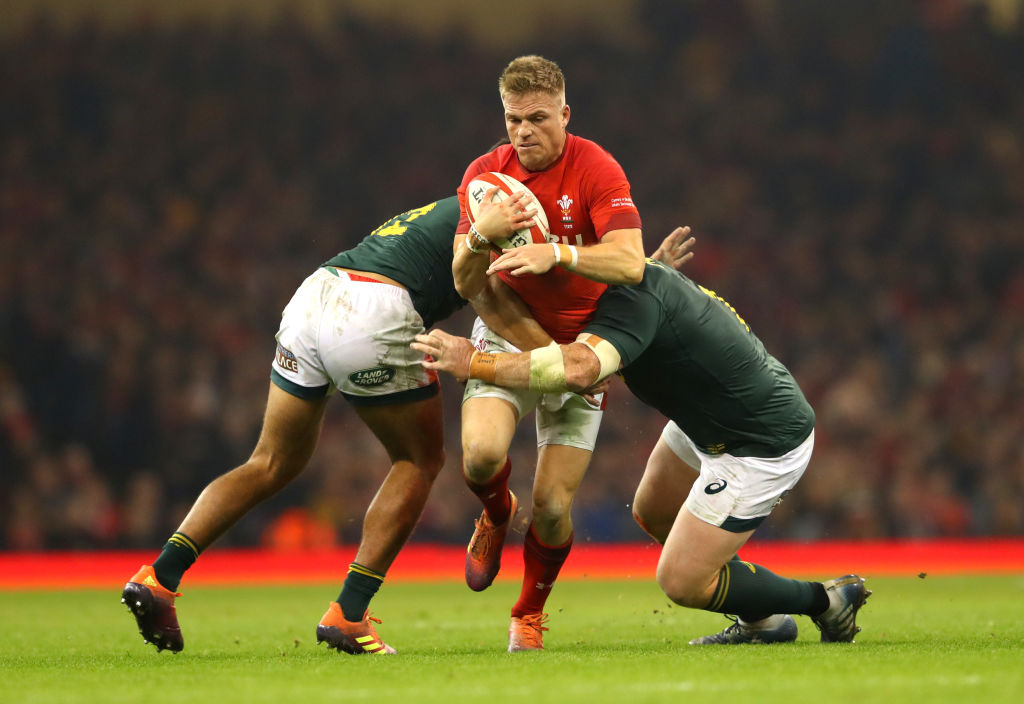
Another advance in the Wales game which benefits their 9–10 pairing is the efficiency of their front five. The Welsh do not have a dominant scrum, but it is not a weakness either, and their props are very versatile.
They are solid at the set-piece, and also contribute strongly in the loose. The Welsh front-five forwards carry and tackle – and, crucially they pass well – which means that the attacking links do not break down when forwards get involved, as happens with some sides.
Wales use a system whereby the first pod usually includes a front row and a second row. They make inroads off that in a similar fashion to New Zealand, with the first receiver making a quick tip-on pass. If the timing is right the speed of it helps the ball-carrier to win the collision, and with that comes quick ball and gaps to attack.
It has become part of the Gatland regime, and my only surprise is that Wales did not open their eyes to the opportunity earlier. However, Gatland's hard work has paid off because they now have reserve forwards who can do the same.
We saw the Welsh depth in the autumn win over Tonga, where, despite making lots of changes to the starting line-up, they still scored ten tries. As a coach that's what you want your second team to do, and locks like Adam Beard and Jake Ball, hooker Elliott Dee and tight-head Leon Brown went out and did a job.
The great news for Gatland is that there is not just competition for places in the forwards, but that many of his key players are at the top of their game. For instance, Alun Wyn Jones is in such great form that even his worst performances are 8 out of 10.
Added to that there are others who follow his lead in terms of good handling and mobility. First choice tight-head Tomas Francis gets about well for someone of his size, Ken Owens is a livewire in the loose, and props like Rob Evans, Wyn Jones and Nicky Smith also get about.
Wales have plenty of backrow resources as well. It is unfortunate that Cardiff openside Ellis Jenkins was injured during his man-of-the-match performance against South Africa, but with Justin Tipuric, Ross Moriarty and the soon to return No.8 Taulupe Faletau to call on, and opensides Josh Navidi and James Davies available too, the Welsh have enviable depth.
A centre combination of Hadleigh Parkes and Jonathan Davies is another big attacking threat. Davies has a huge presence, and is capable of lifting the rest of the side. He was the man of the series for the 2017 Lions, where he was highly influential in defence and attack.
However, I think that Davies can do even more in attack to cement himself as the best outside-centre in the world. To do that he has to get the ball in his hands a lot more.
What could offset that is if opponents work on trying to expose outside-centres who fly up in defence. Scotland fly-half Finn Russell did that by putting Huw Jones clear against England last season, and Davies and Parkes will have to be alert to it.
Parkes is very solid at inside-centre. You are in shock if you see him drop a ball, and because he does not fluctuate in terms of consistency and is pretty well always a 7.5/8 out of 10, he is a crucial component not just in the Welsh backline but the team as a whole. Wales are also in good shape in the back three. Halfpenny is attacking more now that he is back at the Scarlets, and he remains very good under the high ball. He is an established elite level full-back, whereas Liam Williams is not.
Williams has huge attacking ability, and on the 2017 Lions tour Gatland worked out how to get the best out of him by starting him at 15. Yet, his future for Wales is likely to be more at wing, where he has been playing well for Saracens – and he will only get better given their intensity.
There is strong competition at wing now that George North has rediscovered his scoring touch after joining the Ospreys. North has been an influencer for Wales, and if he can get close to the form he had for the 2013 Lions in Australia, he can be so again.
Josh Adams is a powerful finisher, and it earned the Worcester wing praise from Gatland after the autumn. Leicester's Jonah Holmes is another useful back three edition. He is a balanced runner, and pretty quick with a good skill set – so there should be more to come from him.
The same applies to Wales, who are in a good place as the Six Nations approaches.
